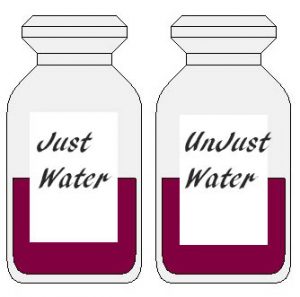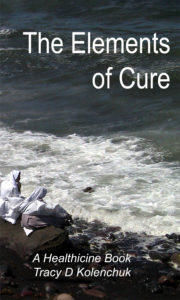 Have you ever been cured by a homeopath? Do you know someone who has been cured by a homeopath? What happens after a homeopath cures your illness? You’ve been cured. Your doctor cured you. But nobody else cares.
Have you ever been cured by a homeopath? Do you know someone who has been cured by a homeopath? What happens after a homeopath cures your illness? You’ve been cured. Your doctor cured you. But nobody else cares.
What does the science say? We can find homeopathic cures in medical science, we to look beyond “treatments“. Most clinical studies measure “treatments that don’t cure“. We want to believe researchers are searching for “cancer cures“. But no. Cancer cured is not defined. There is no test for a case of cancer cured. Of over than 70,000 current and past cancer clinical studies listed at ClinicalTrials.gov, not one contains a testable scientific medical definition of “cancer cured”. When a clinical trial encounters a cured patient – the cure cannot be recognized. Cancer clinical trials measure treatment benefits, not cures.
Some clinical trials contain tests for cured. Some of those are treatments with homeopathic medicines. Some clinical studies of homeopathic treatments those find cures. What happens after a homeopathic cure is found? It disappears. Sometimes, at a later date, it is disappeared even more. But, let’s look at a simpler disease.
Cure for Warts?
Is there a cure for warts? Conventional medicine has no cure for warts. Tests for warts cured are weak and inconsistent, however – some clinical studies have tested for warts cured.
In 1996 a clinical study Homoeopathic versus placebo therapy of children with warts on the hands: a randomized, double-blind clinical trial. treated 60 children with warts. According to the published research, 6 patients were cured in the study. Five of the cured were treated with the homeopathic medicine.
What happened to the cures? What happened to the cures from homeopathic treatments? They were intentionally disappeared. The scientific peer-reviewed published research study conclusion simply ignored the cures, stating: “There was no apparent difference between the effects of homoeopathic therapy and placebo in children with common warts under the conditions of this study.” Five cures (16 percent of patients) in the homeopathic treatment arm of the study were ignored, disappeared. There was no further analysis. No chemists or medical researchers made any attempt to understand the cause of these cures. The cures, the presence and number of cures – were at odds with the study conclusions, so they were disappeared.
Disappeared Again
Two years later, these homeopathic cures were disappeared even further. In 1998, some of the same researchers undertook and published a second study. The same number of participants. The same homeopathic medicine. The same placebo arm. And the results? How many patients were cured? We don’t know. Cures were not counted. Cures were excluded from the study parameters, excluded from the published study. All cures were ignored, intentionally disappeared before the study was published.
What happens after a homeopathic cure? Patients might be cured, but the cures disappear from the scientific medical view.
No current medical practice counts cures. There are no statistics for cured of any disease, so there are no statistics of homeopathic cures. Patients are cured, but cures don’t count.
The clinical trial Homeopathic medicinal products for preventing and treating acute respiratory tract infections in children, published in 2018, clearly demonstrates much the nonsense surrounding the word cure in clinical trials. This was a meta-study. Most studies found were excluded due to poor quality or poor fit for analysis. Although the study objectives are to evaluate treatments, the word cure occurs over 80 times in the report.
Cured was defined several different ways, in different studies. Cure is defined in the following quotes from the study.
- Cure: defined as the reduction or resolution of symptoms of ARTIs (fever/body temperature, cough, pain, malaise/feeling of illness, rhinorrhoea, etc.) in the short‐ (up to 14 days) and long‐term (up to 3 months).
- Cure was defined as no severe persistent fever or pain after 24 hours and no moderate persistent fever or pain after 48 hours.
- Cure was defined as a symptom score of zero and a Tympanic Membrane Examination score of zero.
- Jacobs 2001 defined cure as no symptoms or a significant reduction in symptoms.
- None of the time points for cure were the same across the two studies (Jacobs 2016; Sinha 2012)
- Sinha 2012 provided long‐term cure data for day 21 of illness, and Jacobs 2001 for week 6 of illness.
- in Jacobs 2001 the cure rate was higher among children receiving homeopathy, while in Sinha 2012 the cure rate was higher in children receiving conventional treatment.
It is worth noting that the researchers use the word “cure” but not “cured” to define the cured state. This is common in medical research studies. Cure is not defined, so cured is not defined either.
It’s clear that, although the word cure is used often, there is no independent definition of cured. Cure is defined by independently by specific researchers in each specific study.
 There is no scientific definition of cured. Conventional medical bureaucracies have no Theory of Cure. Phrases like long term cure and cure rate have little or nothing to do with the condition of the patient, the illness, or the cause of illness. Use of the word cure, rarely references any cause of the illness.
There is no scientific definition of cured. Conventional medical bureaucracies have no Theory of Cure. Phrases like long term cure and cure rate have little or nothing to do with the condition of the patient, the illness, or the cause of illness. Use of the word cure, rarely references any cause of the illness.
Most clinical trials of homeopathy measure treatments that do not cure. This is the standard for most clinical trials, because cured is rarely defined. So, we see research like Homeopathy for treatment of irritable bowel syndrome. Cured is not defined for irritable bowel syndrome. If a cure occurs – it cannot be recognized and cannot be documented. Cures, when they occur, disappear. They are simply outside of the scope of the study.
Cured is not defined medically for any non-infectious disease. When any cure occurs for non-infectious diseases, the cure cannot be documented. It disappears.
Homeopathy is not the reason for this blindness, just another casualty. No clinical study can find a cure – when cured is not defined scientifically.
Although the common mantra of homeopathy is “like cures like” (similia similibus curentur), cured is not defined in homeopathy either. Most use of the word cured in homeopathic research refers to symptoms, not disease, as “Symptom distribution according to predefined classes (common symptoms increased in intensity and/or duration-, cured, old, new and exceptional)” – a nonsense definition.
Unfortunately, conventional medicine also no definition of cured for most diseases and therefore cannot rebut homeopathic claims of cured. Instead, conventional medical practitioners and researchers suggest that “homeopathic treatments cannot possibly work“. Works, in medical science, generally means “does not cure“. If it cured, we could use the word “cure”.
Do homeopathic treatments cure?
We simply don’t know. When a homeopathic treatment cures patient’s illness – the cured status and the cause of the cure are be ignored by conventional medicine.
What happens after a homeopathic cure? It disappears. Cured is not defined for most diseases treated with homeopathic medicines. Homeopathy aims to cure symptoms, not illness, not disease.
When a cure occurs in a most clinical trials, the cure disappears. Cures in any clinical trial of non-infectious diseases disappear, because cured is not defined for any non-infectious disease. It’s the same all medical practices. When a cure occurs in a chiropractic medical practice, the cure disappears, even though many chiropractic cures are trivial to prove without a scientific definition of cured. The cure disappears.
When a homeopathic cure occurs, the cure disappears.
To find scientific answers about cures and homeopathy, we need to study cures first, more than homeopathic medicines. Attempts to measure the non-curative effects of homeopathic treatments, vs placebos or vs conventional medicine, is just asking the question:
 “which treatment DOES NOT CURE better”
“which treatment DOES NOT CURE better”
It’s a nonsense question. When any treatment “cures better”, without a definition of cure – we have no idea if it moves the patient towards a cure, or away from a cured status.
The Elements of Cure defines cures in a comprehensive fashion, providing a foundation for studies of treatments that cure.
to your health, tracy
Author: The Elements of Cure


